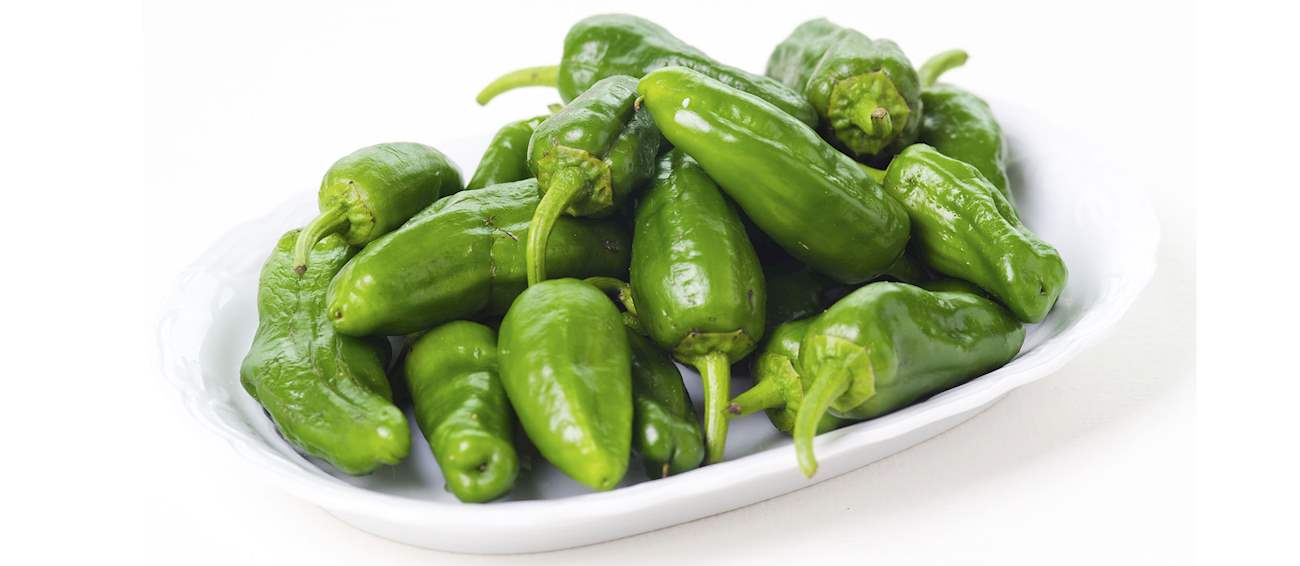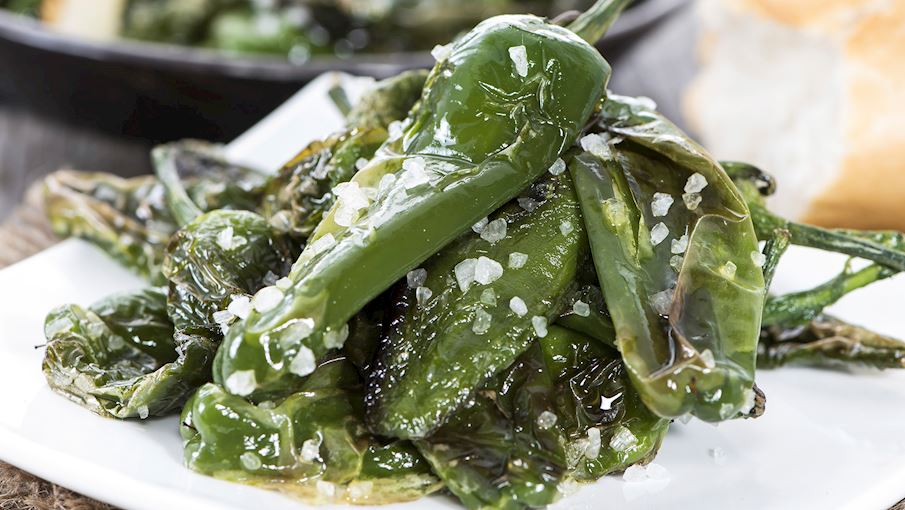TABLE OF CONTENTS
Best Galician Bell Pepper Types
Padrón pepper is a Galician pepper originating from the Padrón municipality. The peppers range in color from bright green to yellowish green. Although they are usually mild in flavor, about one in ten of these peppers is spicy as hell, but it's almost impossible to tell them apart until you taste them, which is like playing Russian roulette with peppers.
Padrón peppers are traditionally fried in olive oil and seasoned with coarse sea salt. They are served in most tapa bars and restaurants in the region, and it's recommended to have a glass of beer, wine, or cider nearby - in case you eat a few of the spicy ones.
Pemento do Couto are the Capsicum annuun L. peppers grown in the Province of A Coruña, in the autonomous community of Galicia. These peppers are harvested in the early stage of their development while they are still green and have not yet developed their red hue.
Pemento do Couto are relatively small peppers with the length of about 6 cm, smooth and shiny skin and an intensely sweet, mildly spicy flavor that is a consequence of the absence of capsaicin. They have a herby, green aroma and are very crunchy, juicy and succulent.
Pemento da Arnoia is a green pepper of the Capsicum annuun L. species traditionally grown in the area of only 23 km2 in the Province of Ourense, in the south of the Autonomous Community of Galicia. These bell peppers are green-colored with smooth and shiny skin and mellow aroma.
Their flavor is quite sweet with a little bit of a spicy bite. They are harvested by hand while they are still unripe to preserve their green color.
Pemento de Oímbra are the Capsicum annuun L. peppers grown in the District of Verín in the Province of Ourense. They are green when unripe and are harvested for consumption at this stage of development. However, once they fully develop, they become bright red in color; in this stage, they are harvested only for their seeds.
Pemento de Oímbra are between 10 cm and 20 cm long, with smooth and shiny skin and an intensely sweet, mildly spicy flavor. All stages of cultivation must take place within the defined geographical area, which provides ideal weather and soil condition for the development of this particular variety.
TasteAtlas food rankings are based on the ratings of the TasteAtlas audience, with a series of mechanisms that recognize real users and that ignore bot, nationalist or local patriotic ratings, and give additional value to the ratings of users that the system recognizes as knowledgeable. TasteAtlas Rankings should not be seen as the final global conclusion about food. Their purpose is to promote excellent local foods, instill pride in traditional dishes, and arouse curiosity about dishes you haven’t tried.



